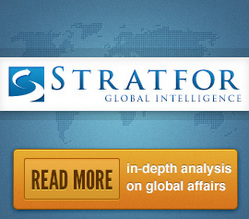Throughout the Cold War, the symbolic center of the standoff between the Soviets and the West was Germany, split in two - much as the whole of Europe was - by the infamous Iron Curtain. But now, in Ukraine, a new center has emerged in the rivalry between East and West, dividing the country in ways that could prove just as enduring as the decadeslong partition of Germany.
This week marks the second anniversary of the Euromaidan uprising that drove former Ukrainian President Viktor Yanukovich from power, shaking Ukraine to its foundations and driving Russia-West relations to their lowest point since the end of the Cold War. Much has changed in the two years since: A pro-West government formed in Kiev, Russia annexed Crimea, and a rebellion in eastern Ukraine developed into a full-fledged war. Meanwhile, the United States and the European Union have levied sanctions against Russia. Moscow has responded with countersanctions against the West. Economic activity between Ukraine and Russia has ground to a halt.
As the Ukrainian conflict enters its third year, a flurry of negotiations aimed at ending hostilities is taking place. At higher levels, officials are holding talks in Normandy to address the conflict's political aspects, while on the tactical front, there are discussions in Minsk to sort out the details of a cease-fire. Alongside both, countless bilateral meetings are being held. Occasionally, these talks renew hope that a lasting agreement can be reached. In reality, though, Ukraine's crisis is not a short-lived skirmish that a little additional negotiation can resolve. Rather, it is a deep-seated conflict, rooted in geopolitics, that stretches back centuries and will likely continue to exist in some form for many more years. Understanding Ukraine's role in the Russia-West rivalry, with its similarities to Germany's role during the Cold War, is crucial to envisioning how Europe's future may evolve.
Ukraine: Divided Between East and West
Ukraine has long been a polarized country. Strategically located on the open plains of Eastern Europe, the country can trace its divisions to the numerous powers and empires that sought to claim shares of its territory. Ukraine first belonged to Kievan Rus, a medieval Eastern Slavic state centered on Kiev that encompassed modern-day Russia, Belarus and Ukraine. But the kingdom began to decline, eventually falling to the Mongols in the 13th century, and the center of Eastern Slavic power shifted to Moscow. Kiev, and the territory that today makes up Ukraine, languished.
Still, Ukraine was not left to its own devices for long. To the east and west, respectively, Tsarist Russia and the Polish-Lithuanian Commonwealth each controlled parts of Ukrainian territory and jockeyed to gain more. Over time, the Russian Empire chipped away at the commonwealth's hold over Ukraine, until the Polish Partitions eliminated that state altogether. The Russian Empire subsequently divided Ukraine with the Austro-Hungarian Empire to the west until both fell during World War I. After a brief period of independence, Ukraine was divvied up once again, this time between the Soviet Union and the newly independent Poland. Nazi Germany occupied Ukraine during World War II, after which Ukraine was reincorporated into the Soviet Union until the bloc collapsed in 1991.
Ukraine has thus been a site of competition between Russia and Western powers for most of its history, a truth that has not changed since Ukrainian independence in 1991. While Ukraine is no longer directly ruled by outside forces, it continues to be influenced by - and torn between - Russia, on one hand, and Europe and the United States on the other. The country's political orientation roughly aligns with historical borders; Ukraine's west and center lean toward Europe while its east and south pull toward Russia. Every major election in Ukraine has reflected these preferences. Pro-West parties have long competed with pro-Russia parties for control of the government, which has led to abrupt about-faces in Ukrainian foreign policy. For example, the 2004 Orange Revolution set Ukraine on a pro-West path, while Yanukovich's 2010 electoral win brought it closer to Moscow.
Competing Visions for Ukraine's Future
Just as the people of Ukraine held different ideas of which orientation and foreign policies Kiev should have, so, too, did Russia and the West. The Euromaidan uprising that led to the current standoff in Ukraine was not just a reflection of the country's own polarization; it was also a product of competition between two conflicting geopolitical imperatives. Russia must maintain a buffer on its periphery, particularly Ukraine, to feel secure and project power, while the United States and Europe must prevent Russia's rise as a regional power in Eurasia. Though it took several years for these colliding imperatives to manifest in the Euromaidan uprising, the groundwork was nevertheless being laid as soon as Ukraine became an independent state.




